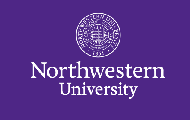In this issue
- IEEE Publication - Transmuting Information to Knowledge with an Enterprise Knowledge Graph
- Tech Corner Article: New Day and Date Functions
- Tech Corner Article: New Websocket API
- AI Programming with Lisp - Northwestern University
- Quickref: a global documentation project for Common Lisp
- European Lisp Symposium, Marbella, Spain - April 16 and 17, 2018
- Enterprise Data World - Taking Graphs to the Next Level with Artificial Intelligence and Machine Learning - April 22-27, 2018
- Follow us on Google Plus, Twitter, LinkedIn, and YouTube
- Training Schedule
IEEE Publication - Transmuting Information to Knowledge with an Enterprise Knowledge Graph

The enterprise knowledge graph for entity 360-views has emerged as one of the most useful graph database technology applications when buttressed by W3C standard semantic technology, modern artificial intelligence, and visual discovery tools. Read this IEEE publication by Dr. Jans Aasman to learn more about Knowledge Graphs.
To read more about the solution, see here
Tech Corner Article: New Day and Date Functions

A suite of day and date calculation functions have been added to Allegro CL 10.1. The functions perform calculations on the number of days between universal time and on related subjects. The functions are discussed in the article New day and date functions. They are documented in Day and date calculation functions in miscellaneous.htm. Note that the functions are in release 10.1 but not in earlier supported releases, 9.0 and 10.0.
To read the article, see here
Tech Corner Article: New Websocket API

Allegro CL now allows users to implement websocket server and client applications in Lisp. The websocket protocol is specified in RFC2045 (www.ietf.org/rfc/rfc2045.txt). The Allegro CL websocket API is described in Websocket API in miscellaneous.htm. We give a simple example showing how to implement websockets in Lisp here. The websocket API module was added by a patch released in August, 2017 and is available in Allegro CL 10.0 and 10.1.
To read the article, see here
AI Programming with Lisp - Northwestern University

This course is about designing and implementing intelligent components, using symbolic knowledge representation, developing tools for authoring the knowledge needed by such systems, and doing it all with tested maintainable code. The language used is Common Lisp.
See here for additional information.
Quickref: a global documentation project for Common Lisp

Didier Verna Announced the availability of Quickref.
The purpose of Quickref is to provide a centralized collection of reference manuals for the whole Quicklisp world. This means around 1500 libraries, for a total of around 3000 ASDF systems. The reference manuals are generated by Declt, which is probably the most complete documentation system for Common Lisp currently available, and delivered in HTML (PDF versions could easily be made available as well).
Read more here.
European Lisp Symposium, Marbella, Spain - April 16 and 17, 2018

The purpose of the European Lisp Symposium is to provide a forum for the discussion and dissemination of all aspects of design, implementation and application of any of the Lisp and Lisp-inspired dialects, including Common Lisp, Scheme, Emacs Lisp, AutoLisp, ISLISP, Dylan, Clojure, ACL2, ECMAScript, Racket, SKILL, Hop and so on. We encourage everyone interested in Lisp to participate.
Read more here
Enterprise Data World - Taking Graphs to the Next Level with Artificial Intelligence and Machine Learning - April 22-27, 2018

The 22nd Annual Enterprise Data World (EDW) Conference hosted by DATAVERSITY® is recognized as the most comprehensive educational conference on data management in the world. Join hundreds of data professionals from around the globe to attend this unique conference. Your transformation to data-driven business starts here!
Franz CEO Jans Aasman will be presenting "Taking Graphs to the Next Level with Artificial Intelligence and Machine Learning".
Graphs and Knowledge Management have gained significant visibility with the rebirth of artificial intelligence and emergence of cognitive computing. By combining artificial intelligence, big data, graph databases, and dynamic visualizations, we will discuss deploying Graph based AI applications as a means to help predict future events across numerous types of industries.
Knowledge creation via AI and Graphs stems from the capability to combine the probability space (i.e. statistical inference on a user’s data) with a knowledge base of comprehensive industry terminology systems. AI using Graphs are remarkable not just because of the possibilities they engender, but also because of their practicality. The confluence of knowledge via machine learning, visual querying, graph databases, and big data not only displays links between objects, but also quantifies the probability of their occurrence. We believe this approach will be transformative across numerous business verticals.
During the presentation we will describe the Graph based AI concepts that also incorporate Hadoop, along with analytics via R, SPARK ML and other AI techniques for practical Enterprise predictive analytics use cases.
For additional information, see here